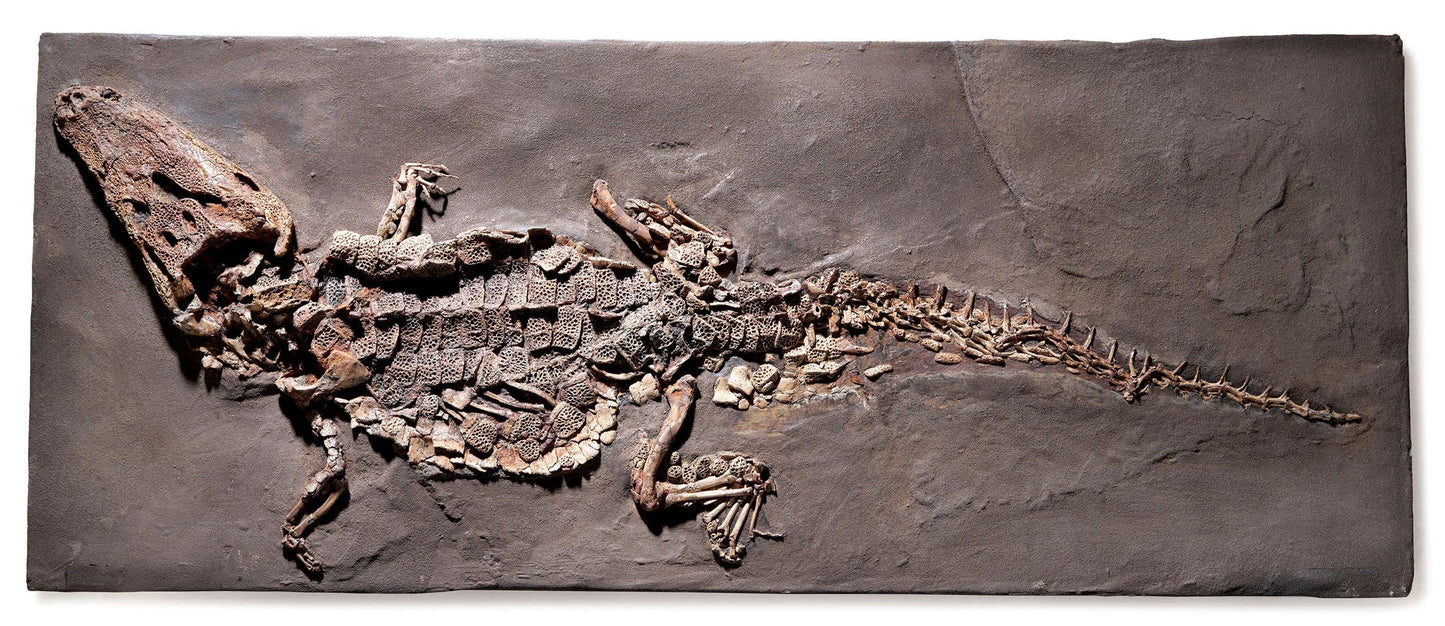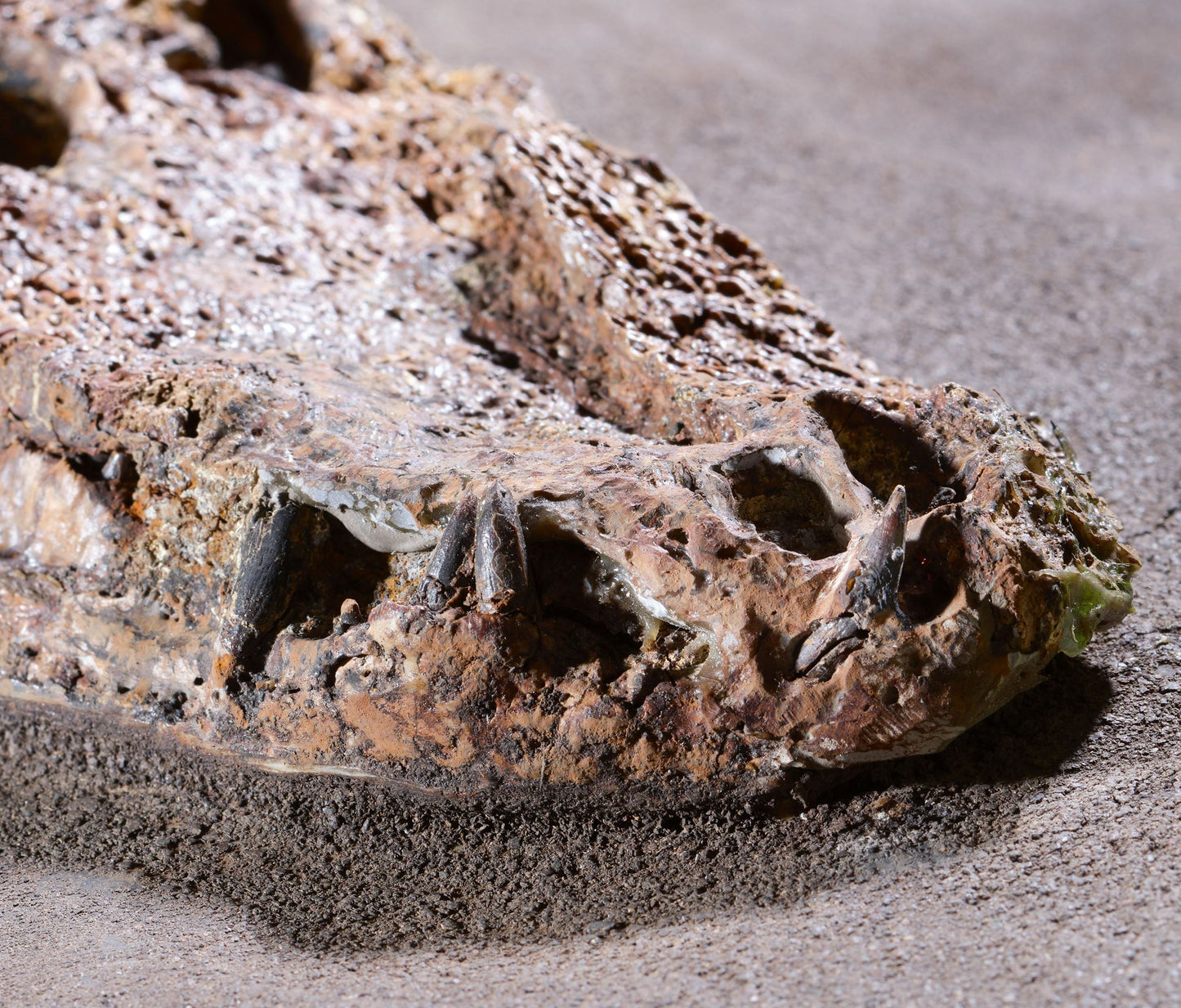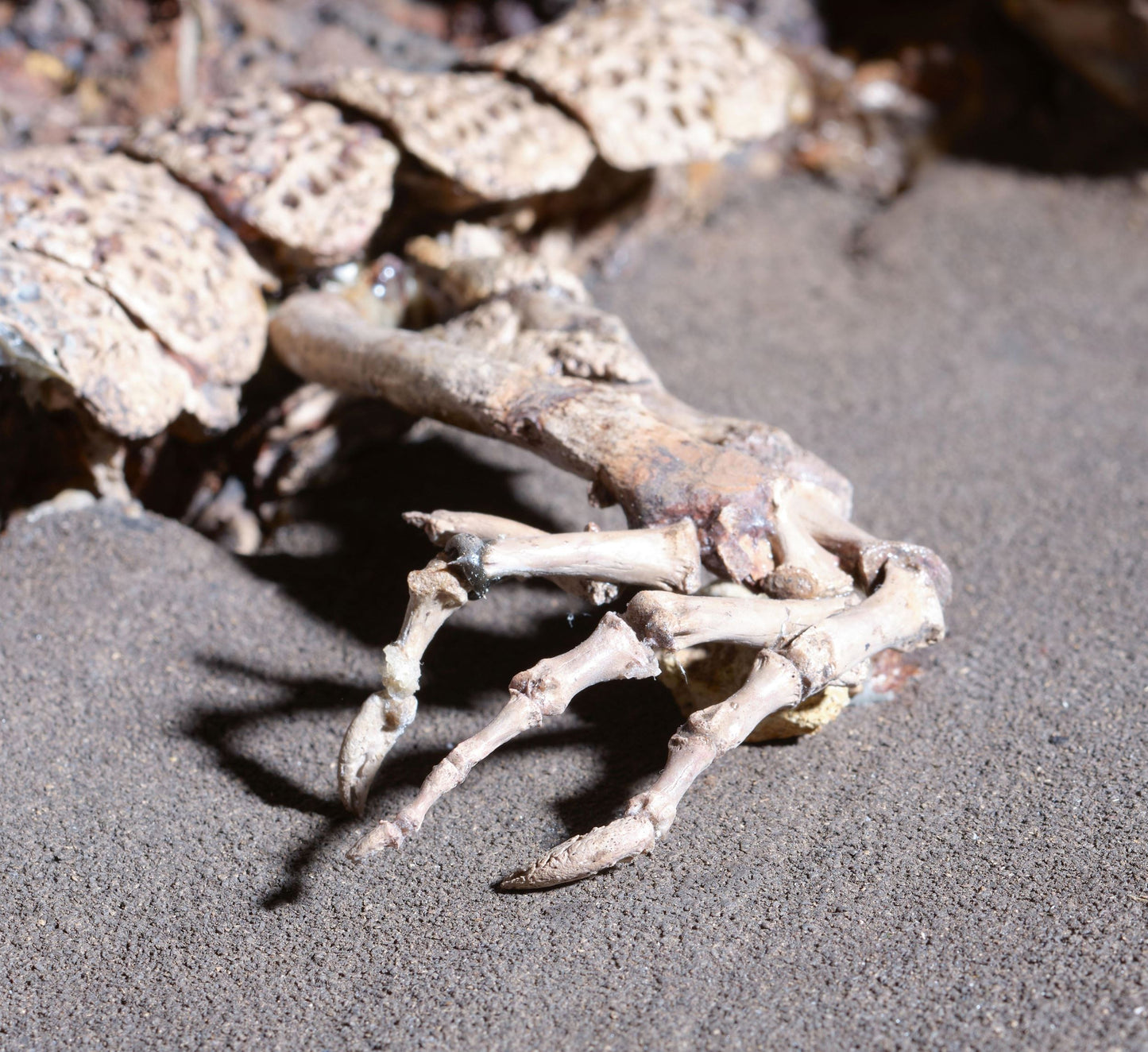Urweltsteinbruch Holzmaden
PRICE ON REQUEST | Crocodile Dyplocynodon Darwini | Messel, Germany
PRICE ON REQUEST | Crocodile Dyplocynodon Darwini | Messel, Germany
Couldn't load pickup availability
- Price on request: info@urweltsteinbruch.de or +49 (0) 7023 2991
- Origin: Messel, Darmstadt, Germany
- Age: Eocene, about 50 million years old
- Size: H55cm W135cm D9cm
- Length of the fossil: 138cm
- Description: Crocodiles (Crocodylia) are the most modern representatives of the Crurotarsi, a line of evolution of the archosaurs that separated from the line of pterosaurs and dinosaurs, the Ornithorida, around 250 million years ago, in the early Triassic or early Mesozoic. A little over 200 million years ago, this Crurotarsi line produced representatives with the phytosaurs that were relatively similar in appearance and lifestyle to today's crocodiles. From that point on, this race hardly changed, which is why they are now referred to as living fossils.
Even early civilizations attached great importance to them, which was characterized by fear, awe and admiration. The Egyptians even declared them holy to honor Sobek, their god of eternal survival, whom they represented as a crocodile-headed creature. The earliest examples of the "true crocodiles" that still live in the wild today appeared around 80 million years ago. Therefore, there is probably no other species that, from an evolutionary perspective, can still be associated with eternal survival as much as the crocodile.
The crocodile presented here is an impressive example of why they are also known as armored lizards. The defensive scaled armor that extends over the entire torso is, like the rest of this fossil, of the highest quality. Thanks to its incredibly detailed, perfectly prepared body contours, every single scale and every tiny bone can be clearly seen. The closer you look, the more details you notice - such as a minimal change in the bony external nasal openings caused by evolution, which in today's crocodiles combined to form a single opening, but here are still clearly formed as two separate openings. Even after the most extensive inspection, there is still more to discover about this spectacular piece. - Additional information: The world-famous "Messel Pit" fossil site has been a UNESCO World Heritage Site since 1995. In the past, the pit was used industrially to extract petroleum (mineral oil). After industrial use ceased, scientists carried out numerous excavations in the area, which uncovered a large number of impressive treasures. Many of the excellently preserved animal and plant fossils also allow conclusions to be drawn about the ecosystem in Messel 48 million years ago.
- The fossil finds from Messel owe their worldwide fame not least to their exceptional state of preservation. Many of the approximately 51,000 specimens found so far are almost completely preserved and show the finest details. Shimmering colors in beetles, detailed structures in bird skeletons, the clear outlines of the bodies of various animals and even stomach contents with remains of the last meal have been discovered. The excellent state of preservation allows numerous conclusions to be drawn about the former diversity of living creatures, the environmental conditions and the development of fauna and flora.
- Other: Release certificate available.














